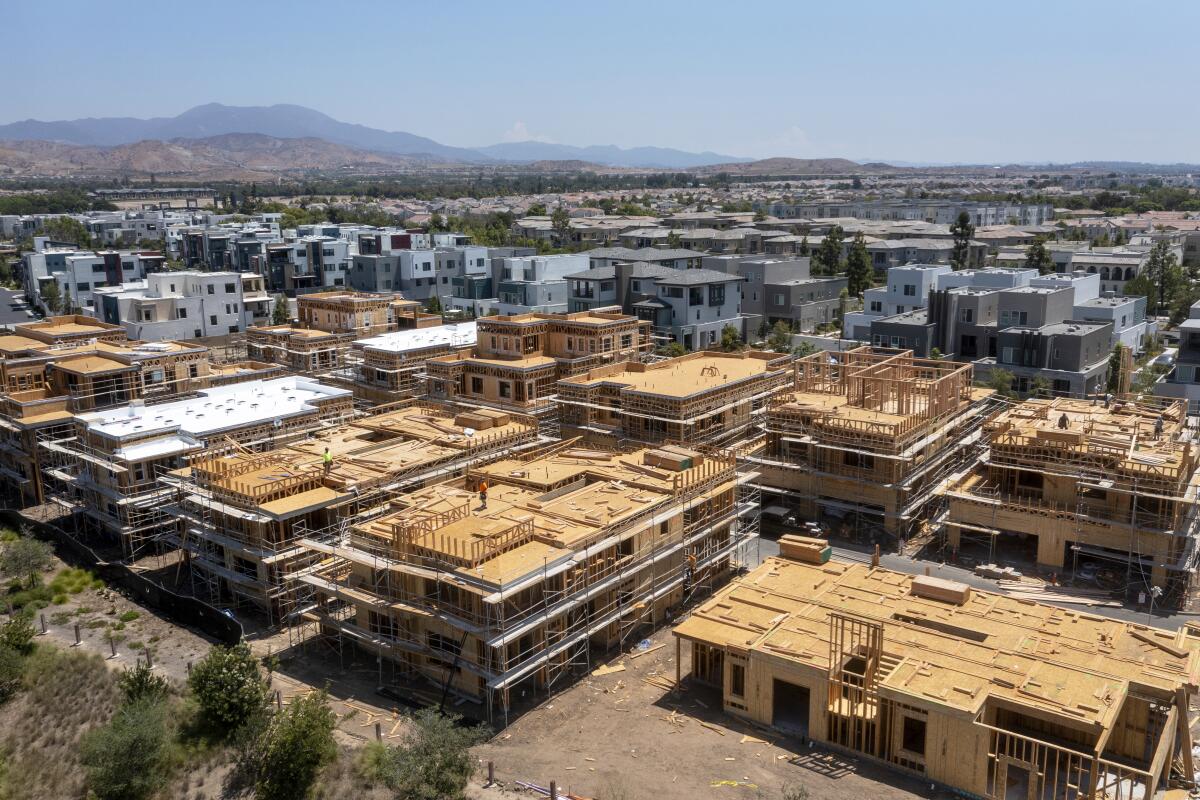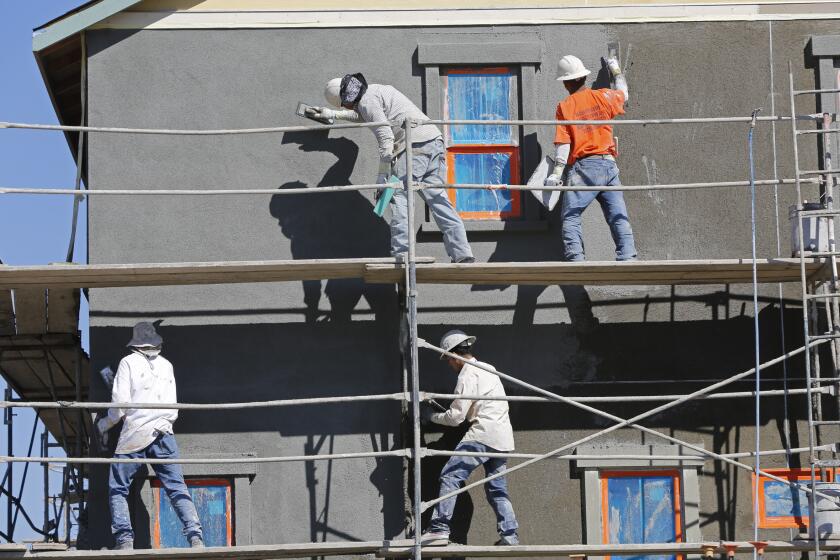Costa Mesa commissioners approve affordable housing law, next stop City Council

- Share via
After months of planning and evaluation, an affordable housing ordinance requiring developers to set aside a percentage of proposed residential units for low-income tenants is heading to the Costa Mesa City Council for potential adoption.
But exactly whether and how such regulations might help the city address its housing needs, or possibly stand as an impediment to those wishing to build projects in Costa Mesa, remains to be seen.
A final draft of the document was approved Monday by city planning commissioners, who’ve spent several months debating the merits of inclusionary housing and its impacts in public meetings where pleas from affordability advocates often clash with the viewpoints of developers and local landholders.
Commissioners themselves were conflicted about the number of units in a proposed project that would trigger the law, what percentage of units should be designated affordable and whether or not Costa Mesa’s housing crisis would be alleviated, or exacerbated, by its implementation.
However, they pushed forward a proposal comprising several basic tenets to be considered for certain defined commercial and industrial corridors in town identified as areas where the city might rezone parcels for high-density residential use.
As passed by commissioners, the law would apply to housing developments with 10 or more units, unless they were specified as condominiums targeted for ownership, which would be exempt.
Developments involving 60 or more units per acre would be required to set aside either 10% of the total units for low-income tenants — defined by the city as earning 80% or less of Orange County’s area median household income ($127,800) — or 5% for very-low income tenants earning 50% of the median income.
Under the current iteration of the ordinance, proposals for smaller units would have a smaller set-aside rate for low- and very-low income tenants, 6% and 4%, respectively.
Denigrated by council members in 2016 as “socialized housing,” an inclusionary housing ordinance is now being seen as one more tool to combat a statewide affordability crisis.
Consultant Kathe Head, president of Los Angeles-based firm Keyser Marston Associates, said she and city staff have been adjusting the rates and limits in response to comments from both affordability advocates, who insist on more stringent laws, and developers, who say they simply won’t build in Costa Mesa if its laws are too strict.
“We really wanted the policy to be on the conservative side, because we don’t want to create a constraint on housing,” she said. “We want market-rate housing to be developed in your community, and we want affordable units.”
Speaking in public comments at Monday’s hearing, representatives from both sides of the issue voiced their hopes, opinions and concerns moving forward.
Adam Wood, vice president of the Orange County chapter of the Building Industry Assn. of Southern California, said an inclusionary housing ordinance offers no incentives to build, only hindrances.
“This isn’t going to make it easier to create housing,” he said. “It’s an extra tax — we can’t tax our way to affordability.”
Those on the other side of the spectrum argued for even higher rates.
“The set-aside requirements in the current proposal are simply too low, and they’re based on faulty assumptions, said Kathy Esfahani, a retired attorney and housing advocate who sits on the Costa Mesa Affordable Housing Coalition.
“Santa Ana has a robust inclusionary housing ordinance that requires 15% low [income] and 10% very low. That ordinance is not stopping the development in Santa Ana. It won’t stop development in Costa Mesa in much more valuable addresses.”
Planning commissioners were similarly split, with some wanting policies that match much faster growing cities like Santa Ana and those who questioned the benefit of having such an ordinance at all.
Vice Chair Russell Toler, for instance, said he’d favor even higher rates for projects with densities at or above 60 units per acre and would be open to examining other trade-offs the city might make with developers, such as mixed-use ground floors, wider sidewalks and street trees.
Commissioner Jon Zich said he wasn’t keen on implementing a law that would essentially let some residents get a break on rents at the expense of the remaining renters in a complex. He also expressed hesitance about bringing more high-density buildings into Costa Mesa and wished the City Council good luck in their future deliberations on the matter.
“If the council is expecting a pile of stuff to be sent to them, I think we’re on the right track. If they’re expecting a finished product that the majority of the public and the advocates from the various special interests are in line with, then we failed at our job,” Zich said.
“I don’t know what their expectation is, but if they’re watching tonight, they know what they’re in for.”
The Costa Mesa City Council will likely consider the ordinance in a first reading sometime in January. After that public hearing, and a subsequent second reading resulting in adoption, the law would take effect 30 days later.
All the latest on Orange County from Orange County.
Get our free TimesOC newsletter.
You may occasionally receive promotional content from the Daily Pilot.





